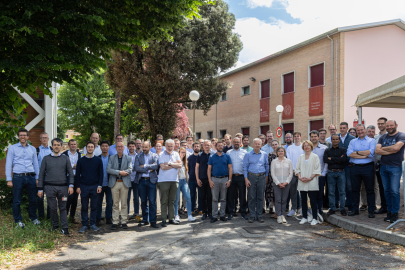Joint research to optimise LED systems
Universities co-operate within the framework of the IJRL Solid State Lighting Technology
2025/05/14 by FG ALSVV
As part of the International Joint Research Lab (IJRL) ‘Solid State Lighting Technology – Components to Systems’, leading European universities are working closely together to improve the reliability and service life of semiconductor-based lighting and irradiation systems.

The IJRL emerged from the successful collaboration of the partners TU Darmstadt, here from the Department of Electrical Engineering and Information Technology (etit) scientists from the Adaptive Lighting Systems and Visual Processing Lab (Prof Tran Quoc Khanh), Integrated Electronic Systems Lab (Prof Klaus Hofmann) and Computational Electromagnetics Lab (Prof Sebastian Schöps), Delft University of Technology (Netherlands), University Padova (Italy), Budapest University of Technology (Hungary) in the European research project ECSEL JU ‘AI-Twilight’. This project has already conducted intensive research into AI-based methods for monitoring the condition of LED systems. The partners have jointly published their results and created a platform with the IJRL to deepen and further expand this cooperation in a targeted manner.
The aim of the current research work at the IJRL is to identify physical ageing mechanisms and possible weak points by means of a multidimensional analysis of the semiconductor components used. On this basis, optimisations can be implemented at component and system level.
At the heart of the research are accelerated lifetime tests, which are used to determine the critical failure mechanisms of different semiconductor emitters and their package designs. The data obtained is incorporated into complex models that precisely describe the electrical, optical and thermal behaviour of the components over the ageing process.
Faster development times for LED systems
Another focus is the development of digital twins: by transferring the analysis data into cross-domain models, lighting and irradiation systems can be simulated realistically. The power supply units and other optical components are also recorded using analogue ageing models in order to be able to virtually map the entire system performance.
Laboratory-proven static and cyclical tests additionally increase the informative value of the models. This means that maintenance intervals and the expected service life of systems can be precisely predicted under real operating conditions. The approach also promises to significantly shorten the development cycles of future LED systems.
Always up-to-date with exciting news from the etit campus: Follow us on Instagram!
Recommended external content
We have selected external content from Instagram for you and would like to show it to you right here. To do this, you must reveal it with one click. You can hide the external content at any time with another click.
I agree to external content from X being shown to me. This may result in personal data being transmitted to third-party platforms. You can find more information in our Privacy Policy.





